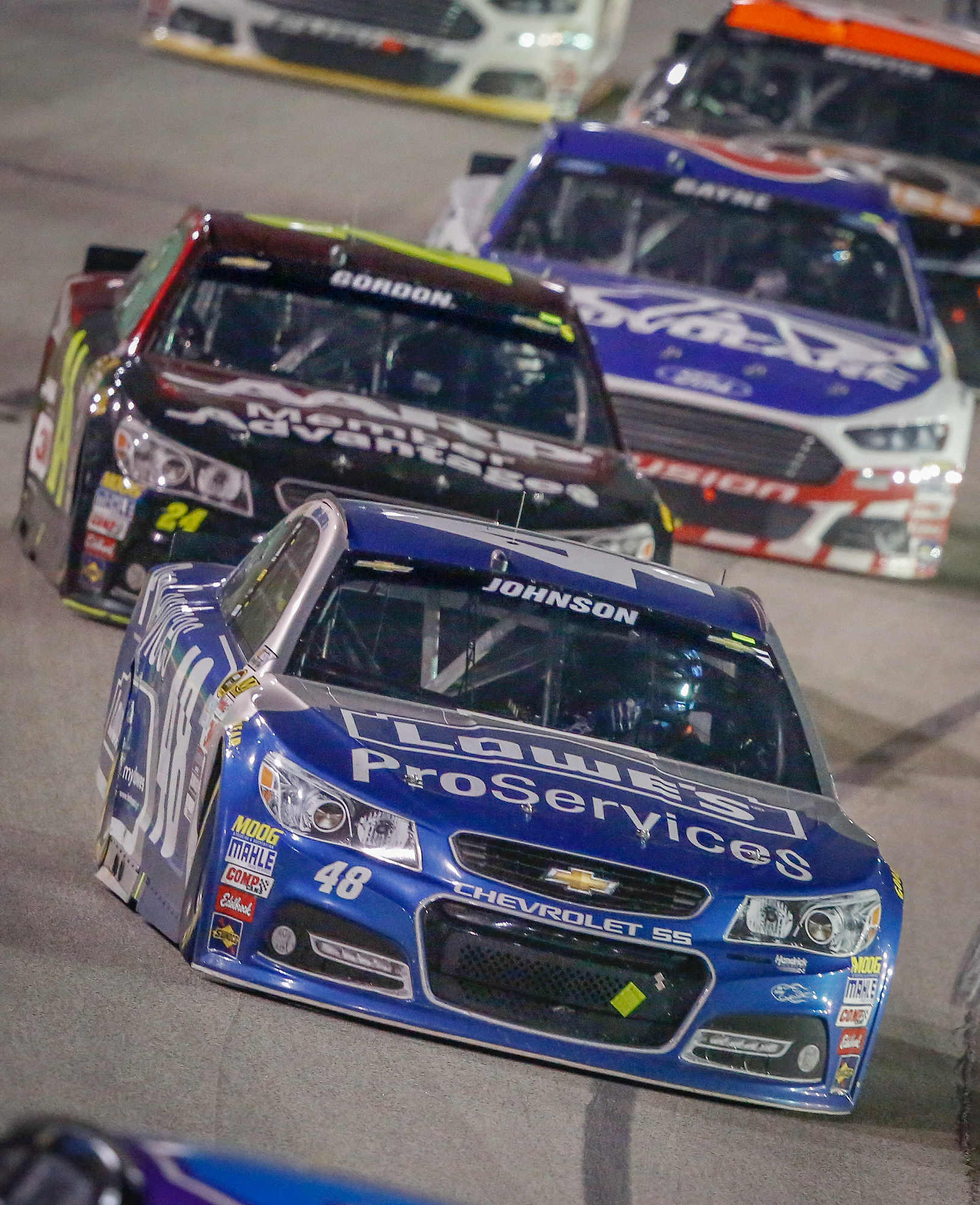NASCAR Drivers Speak Out Against Adjustable Track Bar Device
 |
| Drivers want more technology taken out of the cars. |
The first NASCAR Sprint Cup Series race of the season using the new lower downforce competition package was deemed a universal success and a great first step moving forward.
The consensus from Day 1 was that the reduction in downforce needs to be followed by a soft tire, which will come to fruition in September at Darlington in the Southern 500. But on Sunday after the Quaker State 400 at Kentucky, drivers all agreed on one other potential change:
The driver adjustable track bar needs to go. z
Introduced during the off-season as a way for drivers to make changes to the handling of their cars from inside the cockpit and during a green flag run, the driver controllable track bar was largely frowned upon by most of the garage.
As soon as it was announced in December, drivers believed that the option would allow the entire field to dial down their set-ups and eliminate handling problems before they could pose a threat to their running order.
With the lower downforce setting increasing the number of passes on the track at Kentucky, drivers have now targeted the switch in their car that allows them to raise or lower the track bar as the next thing NASCAR must address.
The first to bring it up was Matt Kenseth, who finished fifth on Saturday and loved the package, but was the first to bring up the track bar.
“From the driver’s seat, it was a lot more entertaining – it was harder work and a lot like it used to be," Kenseth said of the lower downforce competition settings. “I think if they toss away that track bar adjuster you’d see some interesting things happen. You’d see some cars real fast on restarts and real bad at the end of a run and vice versa."
His Joe Gibbs Racing teammate, Denny Hamlin, called the track bar device a Band-Aid for poor handling cars and wholeheartedly agreed with Kenseth.
“Passing comes from one car having more speed than the other," Hamlin said. “Typically when you can stick a Band-Aid on your set-up until the next pit stop by adjusting your track bar and fixing your handling — that gets everyone running the same speed.
“When everyone has the same speed, there is no passing."
Joey Logano finished second on Saturday and believes that passes are set up by capitalizing on the mechanical weaknesses of the car ahead. Logano explained that the track bar eliminates many of those weaknesses throughout the course an event.
“If you can fix that weakness, you make it harder to pass," Logano said. “I think directionally, eventually, we can get that out, but it’s in there. It’s the same for everyone, but it does take a lot out of the crew chiefs hands during the race.
“Like I said, most passes are made from cars that are ill-handling and if you can crutch it to the next stop I think it doesn’t help the racing, but it’s there."
Kyle Busch won the Quaker State 400 and says he could take or leave the driver adjustable track bar. The younger Busch brother said it has both helped and hurt the racing over the course of the season and that he sees it the device as a net positive.
“I personally like it," Busch said. “I was able to use it to my advantage a few times and it really helped me make passes, especially on (Logano) at the end of the race. Obviously, he was probably using his too and it didn’t help him.
“There are times when you do need that and it does help too."
Lastly, count Carl Edwards in the camp of those wanting to get rid of the driver adjustable track bar.
“I second Matt’s opinion," Edwards said. “I think the driver adjustable track bar, if you get rid of it, it makes guys have to suffer longer until they can get to work on their car and that’s what you want." Matt Weaver/Popular Speed
